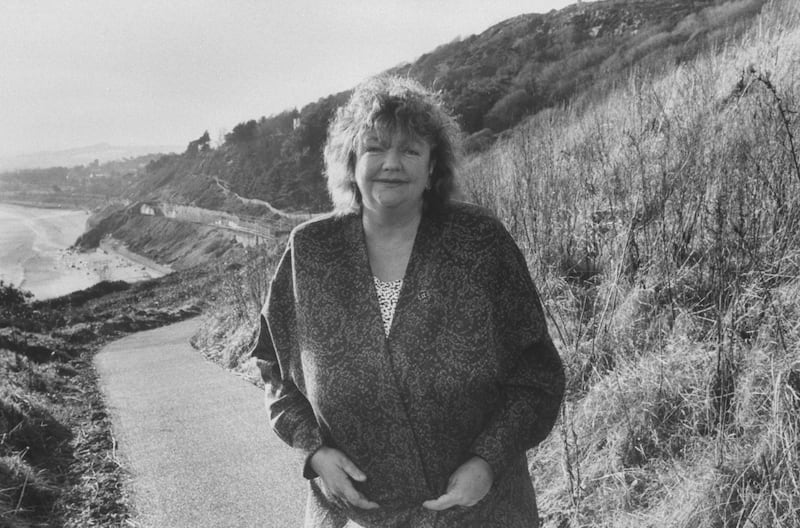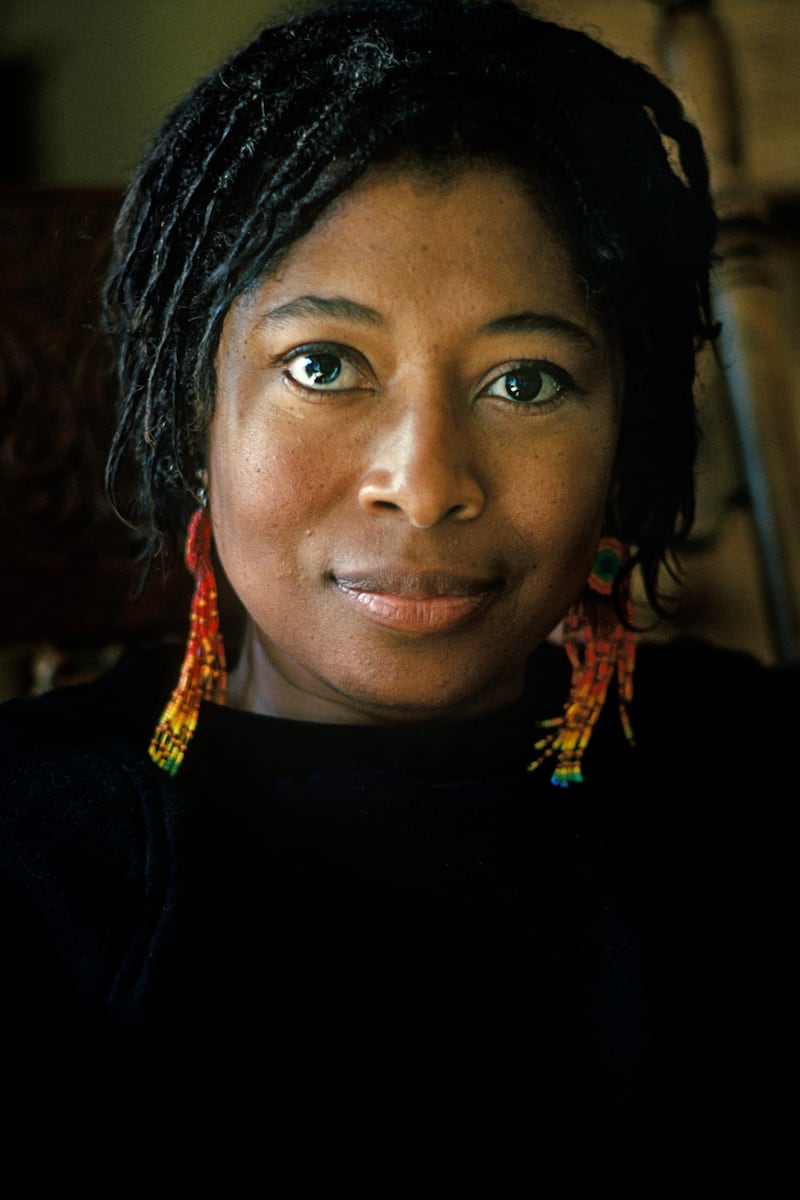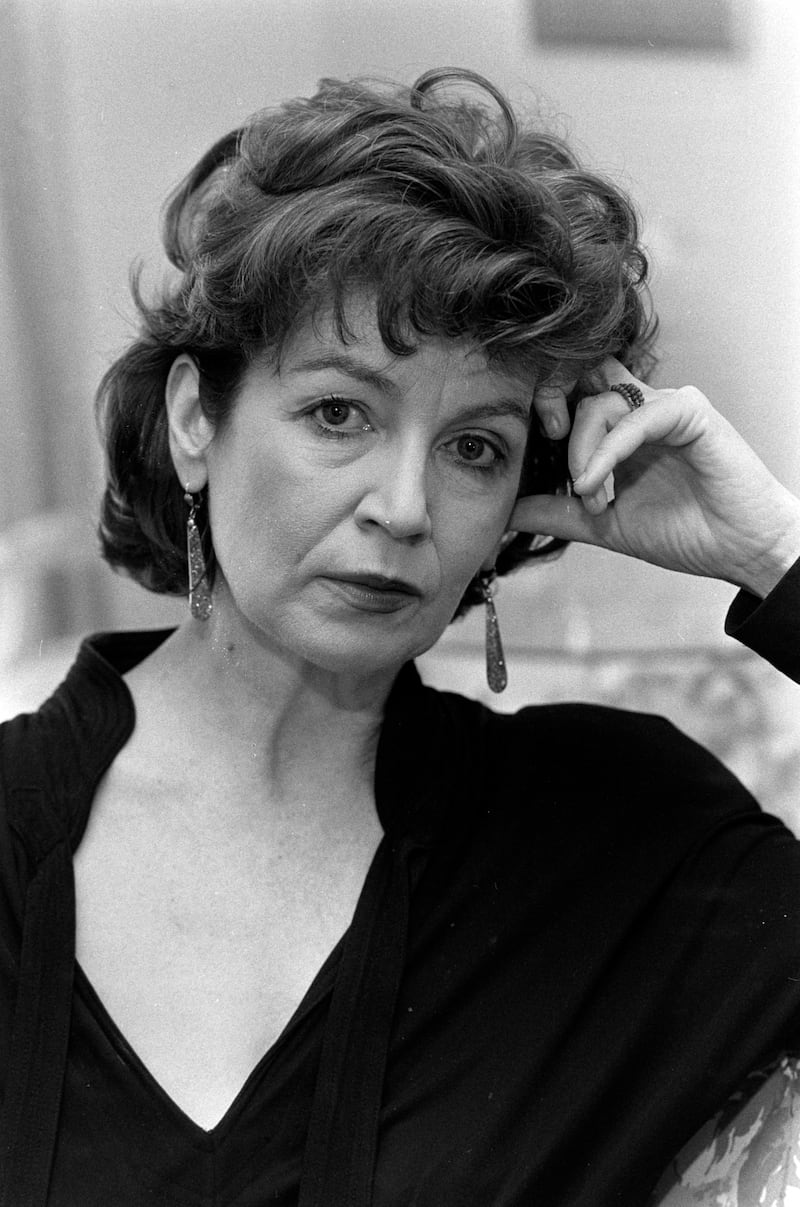In the 1980s I loved many men: the pale Romantics Shelley, Keats and Byron, the long-winded novelists Dickens, Fielding and Richardson, the brilliant, challenging modernists Eliot and Joyce, and the free-spirited beats. No wonder I was stumped when I sat down to write.
I had read little recently published work – an affliction of many literature students – and I could not have named a single contemporary Irish woman writer, with the notable exceptions of Eiléan Ní Chuilleanáin and Eavan Boland, because they happened to teach me at Trinity College Dublin. The contemporary writers we discussed energetically in the Buttery were Milan Kundera, Charles Bukowski and Salman Rushdie. I noticed nothing amiss with this list. Why should I when my exposure to women’s writing was limited largely to Enid Blyton and Agatha Christie?
As a teenager I did not know that the 1980s was a time of renaissance and reclamation for women’s writing. It was a strange decade. We, “the youth”, saw ourselves as progressive; old Ireland was dead and gone, we told our mothers; women could do anything men could do. And there was progress. Family-planning information and services could be obtained from the Young People’s Family Planning Centre, at the end of Synge Street, where I had my first flat, for example. But contraception was still illegal, as was divorce, and while some crossed the Irish Sea to have abortions, quietly and discreetly girls were still being shunted into mother-and-baby homes. It is to their enormous credit that Irish women were writing at all. I was ashamed not to discover them until years later.
[ Celebrating 50 Years of Women’s Writing: The second half of the 1970sOpens in new window ]
The book How to Suppress Women’s Writing, by Joanna Russ, went some way towards assuaging this guilt. She assures us that the blame does not lie with individuals but is the result of systemic suppression, of which this lack of role models is but one part. This might seem obvious today, but in 1983 it was knowledge that was only beginning to appear in the public sphere. Russ catalogues the strategies that combined to uphold the largely white, male canon, summing up the prevailing views of books by women as: “She didn’t write it. She wrote it but she shouldn’t have. She wrote it but look what she wrote about. She wrote it but she isn’t really an artist, and it isn’t really art. She wrote it but she had help. She wrote it but she’s an anomaly. She wrote it BUT...”
RM Block
It was a great pity that I did not read the book when it was first published, because it could have been life-changing. It is unfortunate, too, that despite 40 years of feminist literary criticism and activism, it remains relevant today. As Jessa Crispin’s foreword to the 2018 edition notes, there’s not an enormous difference between the world Russ describes and the world we inhabit.

As a schoolgirl in the early 1980s, I accepted the mostly male-authored Intermediate and Leaving Cert prescribed poems as canon and willingly committed many of them to heart. Later, at university, I sleepwalked my way through the reading lists. Not even the women-lite curriculum could deny the Pulitzer winner Elizabeth Bishop her place: her Complete Poems, 1927-1979 was published in 1983, four years after her death and two years before I began my degree. But for the most part we read “a long line of white men writing about nature and God”, to borrow a phrase from the author Chris Arnone.
I had not read a single word written by my teachers, two of the most prominent poets to emerge in Ireland. (I have since discovered, from the other side of the lectern, that this is not an uncommon state of affairs.) Eavan Boland won international acclaim for In Her Own Image, her 1980 collection. When I came to Boland’s poetry, in the early 1990s, it was Night Feed, from 1982, that I grappled with. Having no experience of motherhood or suburbia, or any interest in either, I could not get on with her. It wasn’t until I had my own first child that I could appreciate the wonderful in the ordinary that is Boland’s great strength: “A woman leans down to catch a child / who has run into her arms / this moment.”
I finally sat down to Eiléan Ní Chuilleanáin’s poetry during the pandemic, starting with The Sun-fish. Its poem On Lacking the Killer Instinct drew me in from the opening line – “One hare, absorbed, sitting still” – and sent me tumbling, with the greyhounds of a few lines later, back to 1921, and her father, running from the Black and Tans. It’s a wonderful collection, full of sensory detail, and an exemplar of writerly attention to nonhuman nature.
Many incredible novels were being written by women at this time. This series has already mentioned the phenomenal success of Maeve Binchy’s Light a Penny Candle, from 1982. Other notable Irish novels include Molly Keane’s Good Behaviour, from 1981, and Time After Time, from 1983, as well as No Country for Young Men, by Julia O’Faolain, from 1980.

Farther afield, Marilynne Robinson published her first novel, Housekeeping, in 1980; Margaret Atwood published The Handmaid’s Tale in 1985; and Anita Brookner’s Hotel du Lac won the Booker Prize in 1984. Alice Walker won both the Pulitzer Prize for fiction and the National Book Award for her fourth novel, The Color Purple, from 1982; she was the first African-American woman to do so. Walker was prolific in these years, also publishing a short-story collection, You Can’t Keep a Good Woman Down: Stories; a poetry collection, Horses Make a Landscape Look More Beautiful; and the iconic In Search of Our Mothers’ Gardens: Womanist Prose.
For me the most important novel of the era was Dinner at the Homesick Restaurant, published in 1982, Anne Tyler’s ninth novel and my first Anne Tyler. It was 1990, and I was living in California. Eager to fill the gaps in my knowledge of contemporary American literature, I picked up the tatty paperback in a hangar-sized used-book store and was persuaded by the blurb from Cosmopolitan’s review, which called it “astringent, hilarious, strewn with the banana peels of love” – an astute assessment of Tyler and her themes more generally, I would learn.
Anne Tyler reminded me how good it felt to relax into a book for sheer pleasure
“When Pearl Tull was dying,” it began, and by page four I was entirely invested in the dysfunctional Tulls: Pearl, the matriarch; Cody, her wild son; Jenny, the capable daughter; Beck, the absent father; and Ezra, the gentle son who never stopped hoping that one day they would all be able to sit through a family dinner at his titular restaurant without incident. The book explores its themes of abandonment, abuse and intergenerational trauma with warmth and generosity, wit and edge, without ever veering into sentimentality.
I read what I could find of Tyler’s backlist, and her next one, The Accidental Tourist, from 1985, and I continue to read each new book as it comes out. I consider her to be a major influence on my writing, for her skill as a storyteller, absolutely, but mostly because, after four years of “reading literature”, she reminded me how good it felt to relax into a book for sheer pleasure.

The Irish short story was enriched in the early 1980s by a new Edna O’Brien collection, Returning, and a selection, A Fanatic Heart. Four of these stories appeared in the New Yorker, while Sister Imelda would also be included in the Norton Anthology of English Literature, in 1986. Savages, one of the New Yorker stories, tells of Mabel, newly returned to her west of Ireland village from Australia only to be shunned by her community for being pregnant outside marriage. It is representative of O’Brien’s stories of this era, which are sharply critical of the insular and repressive society in which she grew up. O’Brien pits her young, female protagonist against church, State and family, and even names and shames the Magdalene laundries for their complicity in the suppression of women, on an international stage.
I encountered Maeve Brennan for the first time in The Long Gaze Back, Sinéad Gleeson’s hugely influential anthology of Irish women’s writing, from 2014. It is her Long-Winded Lady columns I love the most. Brennan had all but concluded her time at the New Yorker by the 1980s, but the short A Blessing, her concluding column, just about makes the cut. In it, a “three-cornered shadow on the pavement” on 42nd Street reminds Brennan of an identical shadow that fell in the garden of her Ranelagh home, 55 years before, and leads to the memory of a New Year’s Eve when all the residents on Cherryfield Avenue went outside to hear the bells ringing in the new year, leaving their front doors open “so that the light streamed out after us”. But the content is nearly beside the point. In Brennan’s columns it is all about her voice, fresh, bold, unique – sui generis, even, if to describe her as such is not to fall into the trap of suppressing women’s writing.
Women writing women: Six key works from the early 1980s
- How to Suppress Women’s Writing By Joanna Russ (1983) Tongue-in-cheek guide that shines an uncomfortable light on canon-making.
- Night Feed By Eavan Boland (1982) New motherhood and domestic life inspire this collection.
- The Color Purple By Alice Walker (1982) The difficult coming-of-age novel that became a cultural touchstone.
- Dinner at the Homesick Restaurant By Anne Tyler (1982) Meet the Tulls of Baltimore. Sit down, make yourself comfortable, bring your hanky.
- Savages By Edna O’Brien (the New Yorker, 1982) A slice of west of Ireland life, O’Brien style.
- A Blessing By Maeve Brennan (1981), available in The Long-Winded Lady: Notes from the New Yorker The author’s short, clear-eyed farewell to the New Yorker magazine.


















